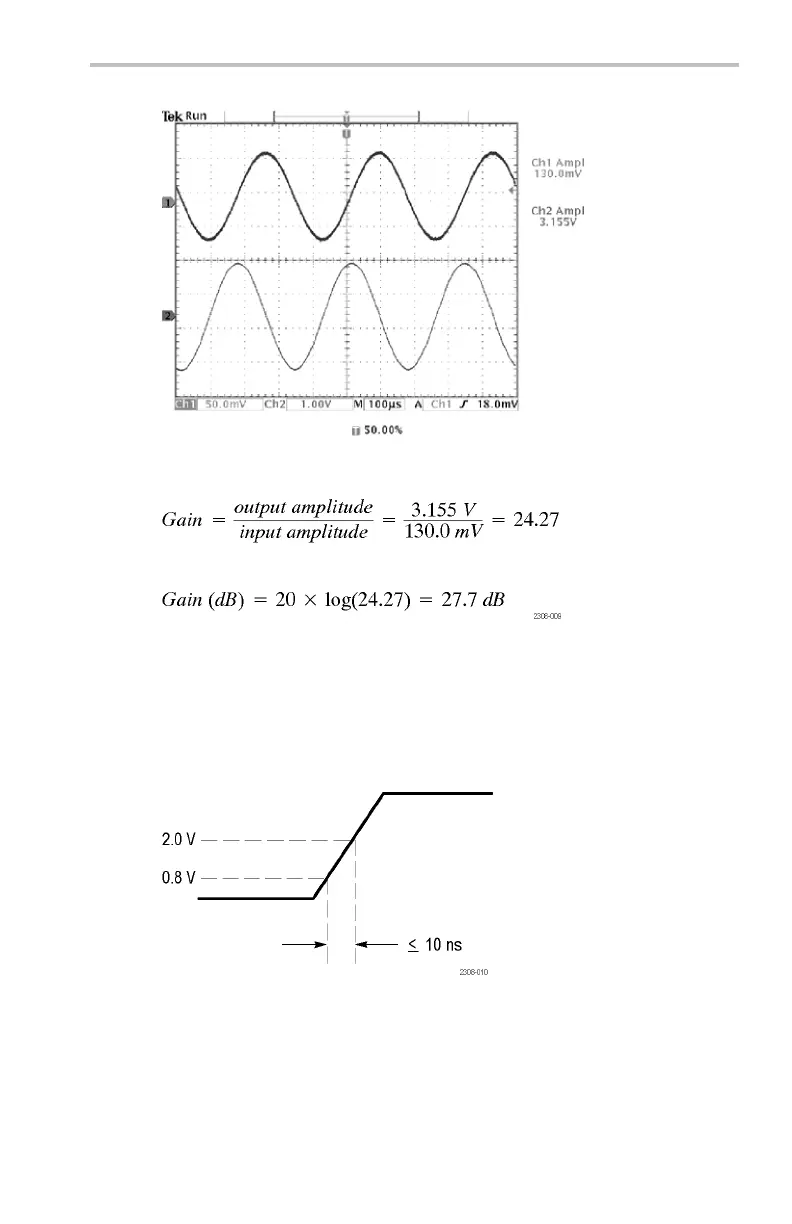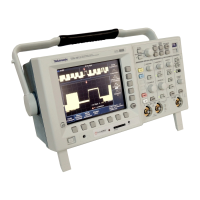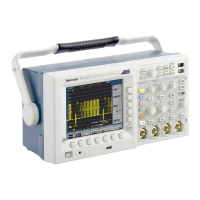Application Examples
Taking FFT Measurements
You can take FFT measurements to determine if low-level distortion is present, or
to find the source of noise in a mixed circuit.
Detecting Distortion
A pure sine wave can be input into an amplifier to measure distortion; any
amplifier distortion will introduce harmonics in the amplifier output. Viewing the
FFT of the output can determine if low-level distortion is present.
You are using a 20 MHz signal as the amplifier test signal. You would set the
oscilloscope and FFT parameters as listed in the next table.
Control Setting
1 Coupling AC
Acquisition Mode Average 16
Horizontal Resolution
Normal (10k points)
Horizontal Scale
100 ns
FFT S ource Ch1
FFT Vert Scale
dBV
FFT Window Blackman-Harris
In th
enextfigure, the first component at 20 MHz (figure label 1) is the source
signal fundamental frequency. The FFT waveform also shows a second-order
harmonic at 40 MHz (label 2), and a fourth-order harmonic at 80 MHz (label
3). The presence of components 2 and 3 indicate that the system is distorting
the signal. The even harmonics suggest a possible difference in signal gain on
half of the s ignal cycle.
TDS3000C Series Oscilloscope User Manual 39

